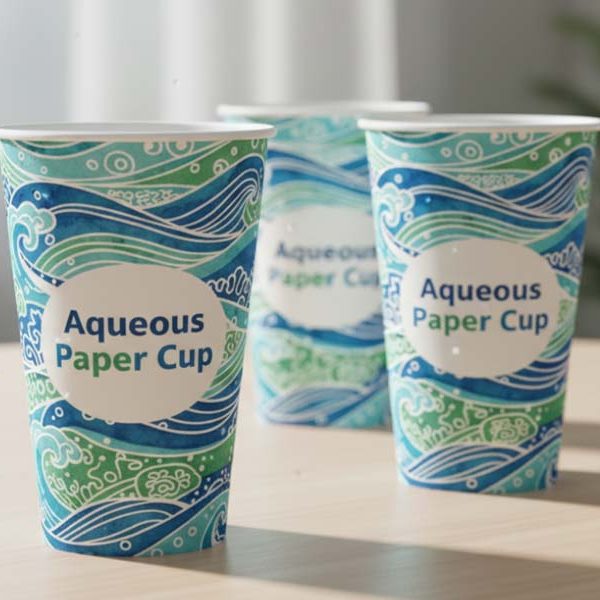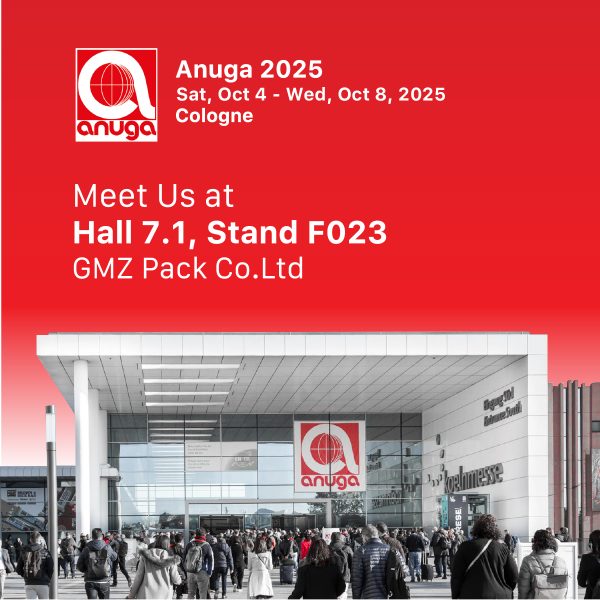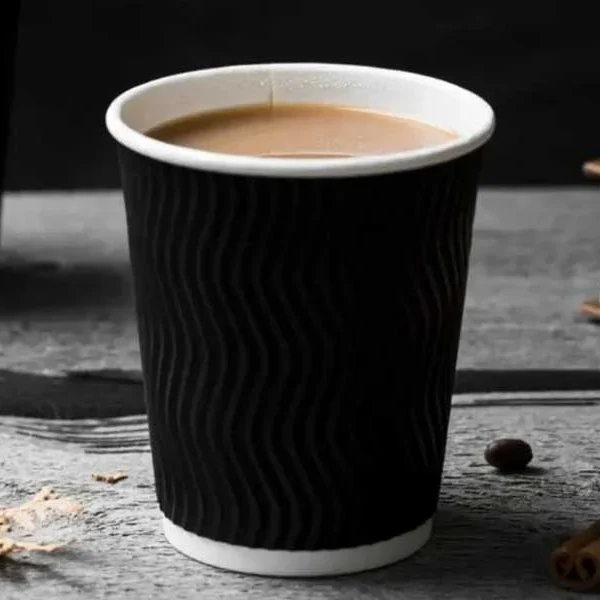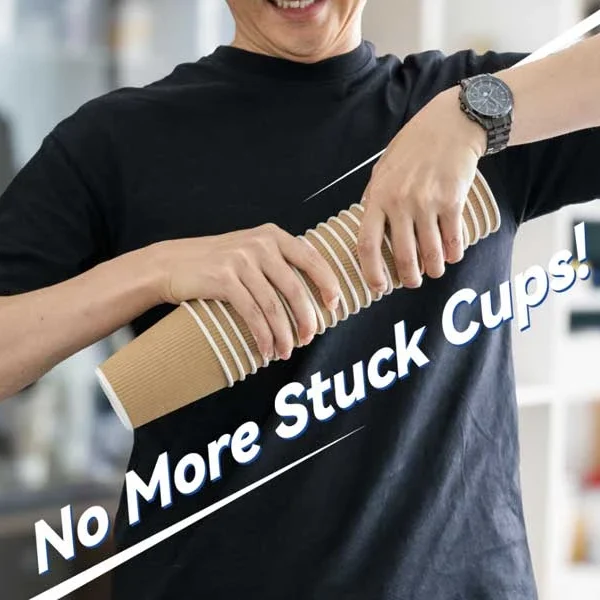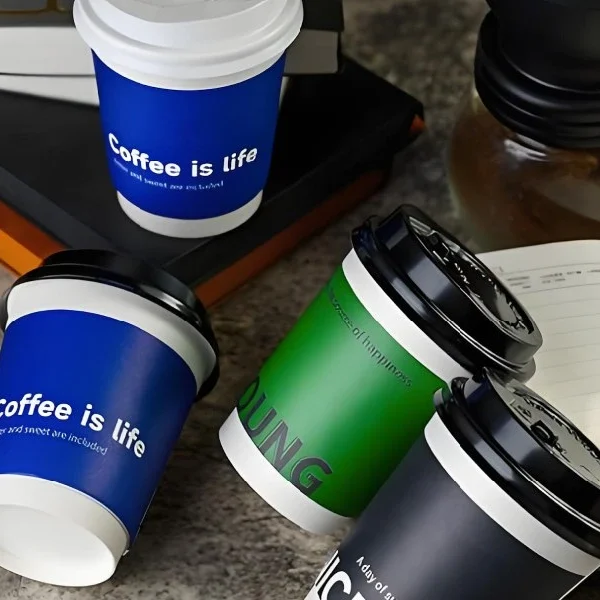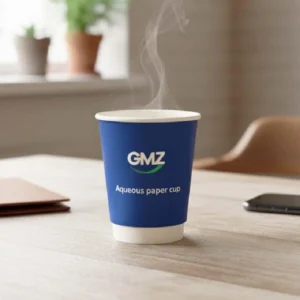When sourcing cups in bulk, many buyers run into the same challenge: there are simply too many options. While different materials, structures, and applications may look similar at first glance, the differences are often significant. Ceramic, glass, plastic, paper, and metal cups each have their pros and cons, and depending on the use case (such as takeout, coffee, cold drinks, or event venues), they can vary widely in function and cost.
For buyers looking for reliable cup suppliers in China, understanding the core features of each major cup type can lead to smarter purchasing decisions, a better end-user experience, and fewer issues with waste or returns.
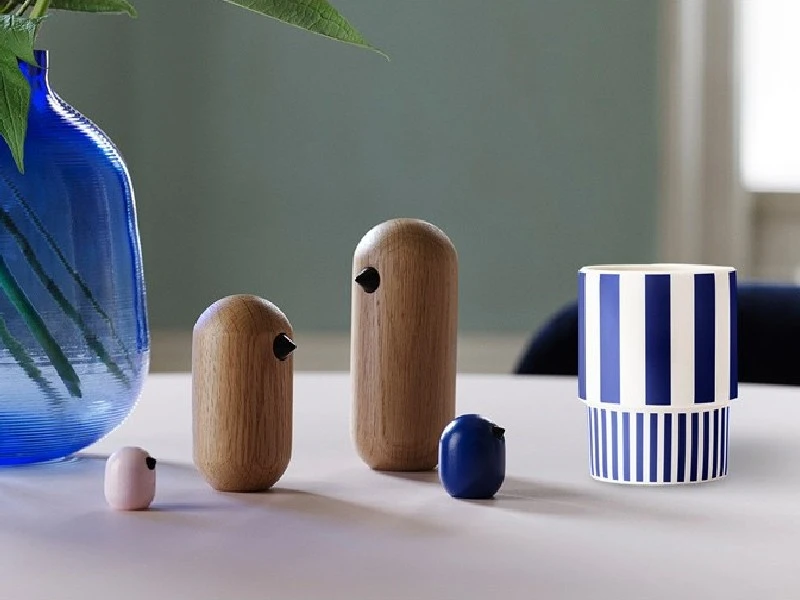
In this guide, GMZ breaks down 12 common cup types across two key dimensions: material and intended use. Whether you’re curating products for a retail brand, sourcing eco-friendly solutions for a takeaway system, or trying to maximize value in bulk procurement, this article offers a practical, decision-focused reference.
Part 1: Cups Categorized by Material: 6 Common Types
When choosing a cup, material is usually the first factor buyers consider. It affects not only the look and feel of the cup but also its durability, environmental impact, and the cost of storage and shipping. For buyers with bulk purchasing needs, understanding the core characteristics of each material helps quickly narrow down options that align with specific business goals. To make that easier, we’ve outlined six of the most commonly used cup materials below, along with their typical advantages and limitations.
1. Ceramic Cups
Ceramic is one of the most traditional and widely used cup materials. It offers great heat retention, solid stability, and a refined look, making it ideal for cafés, offices, and home settings. Ceramic cups are best suited for hot drinks and feel warm to the touch. However, they’re relatively heavy, fragile, and not suitable for takeaway or transport, so they’re mainly used in static environments. For retail brands that prioritize a premium image, ceramic mugs are also a popular choice for branded merchandise or commemorative gifts.

2. Glass Cups (including Crystal Glass)
Glass cups are popular thanks to their crystal-clear transparency and aesthetic appeal. They’re especially great for cold drinks or for showcasing layered beverages like pour-over coffee, smoothies, or cocktails. The material is odor-free and easy to clean, but it has some drawbacks—glass is fragile, easy to break, and comes with higher shipping costs. As a result, glass cups are typically used in controlled environments like restaurants, cafés, and hotels where presentation matters.

Within the glass cup category, crystal glasses represent a more premium variation. They retain the visual clarity and acoustic elegance of standard glass while meeting higher safety and quality standards. Crystal glasses are commonly used in gift sets, upscale dining services, or custom branding projects. However, they are not suitable for disposable use or large-scale fast consumption. Buyers should consider brand positioning and target audiences carefully when sourcing crystal products.
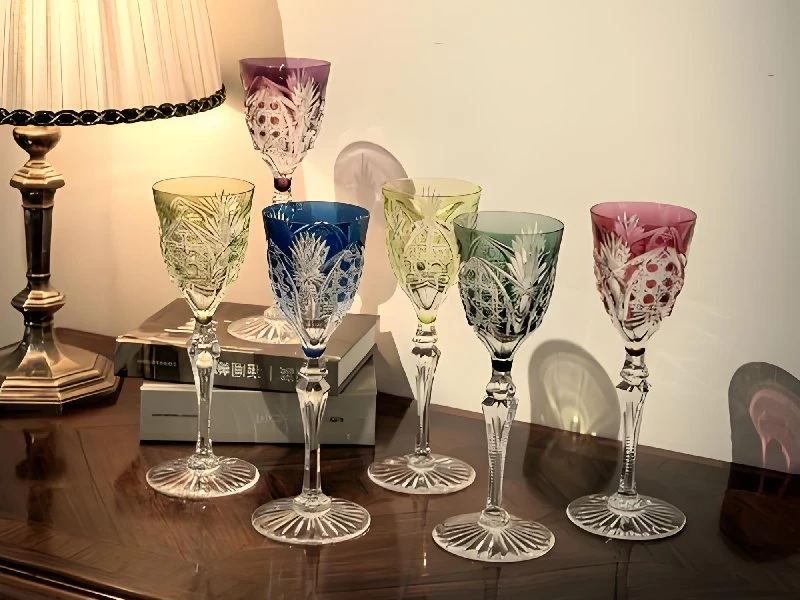
3. Plastic Cups
Plastic cups are highly versatile and can be divided into two main types based on usage cycle: disposable and reusable.
Disposable plastic cups—typically made from PP (polypropylene) or PET (polyethylene terephthalate)—are widely used for cold drinks, juices, bubble tea, and fast food beverages. Their strengths lie in being lightweight, clear, and low-cost, making them a frequent choice in commercial settings. As different countries enforce stricter regulations on plastic usage, factors like biodegradability, thickness, and food safety have become more important when selecting disposable plastic cups.
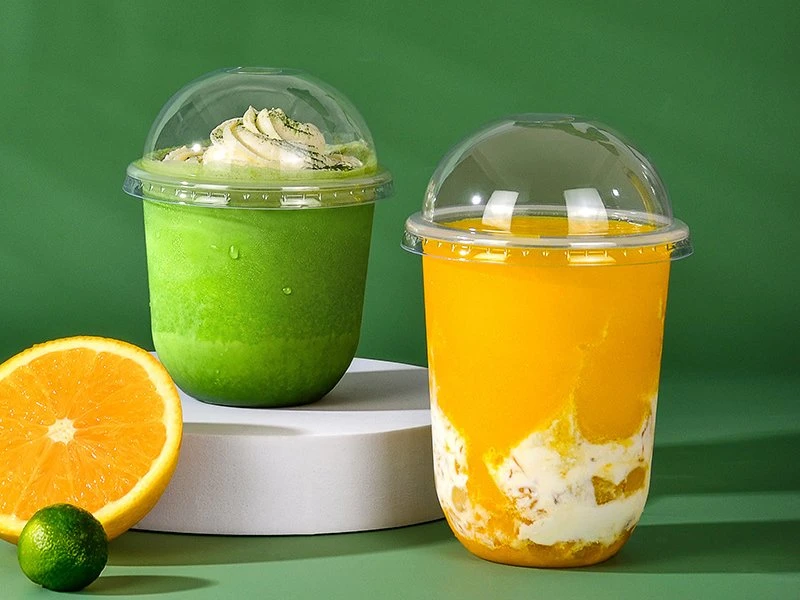
GMZ offers a wide range of disposable plastic cups with varying sizes and thicknesses. Options include cold drink styles, dome or flat lids, and custom transparent designs. These cups are ideal for overseas buyers seeking quality assurance, attractive packaging, and stable supply chains in bulk procurement.
As environmental regulations continue to evolve, more brands and distributors are adopting eco-friendly alternatives such as PLA biodegradable cups and paper-based drink containers. In response to this trend, GMZ also offers hybrid solutions combining both paper and plastic materials to meet the diverse needs of multi-scenario, multi-material sourcing.
Reusable plastic cups are typically made from durable materials like Tritan or PC (polycarbonate). These cups offer excellent impact resistance and odor stability, making them ideal for use as office drinkware, daily water bottles, kids’ sippy cups, or promotional giveaways. They’re designed for repeated use and are well-suited for buyers seeking functional, portable, or customizable products.
That said, consumers should pay close attention to product instructions—especially the material’s maximum heat tolerance. Exposing these cups to temperatures beyond their rated limits may cause deformation or, more seriously, lead to the release of harmful substances, which could pose health risks.

4. Stainless Steel Cups
Stainless steel cups stand out for their durability, impact resistance, and reusability. These qualities make them a popular choice for outdoor activities, travel mugs, sports bottles, and insulated containers. They provide excellent temperature retention and long-term use, appealing to customers who value high-quality, reliable drinkware.
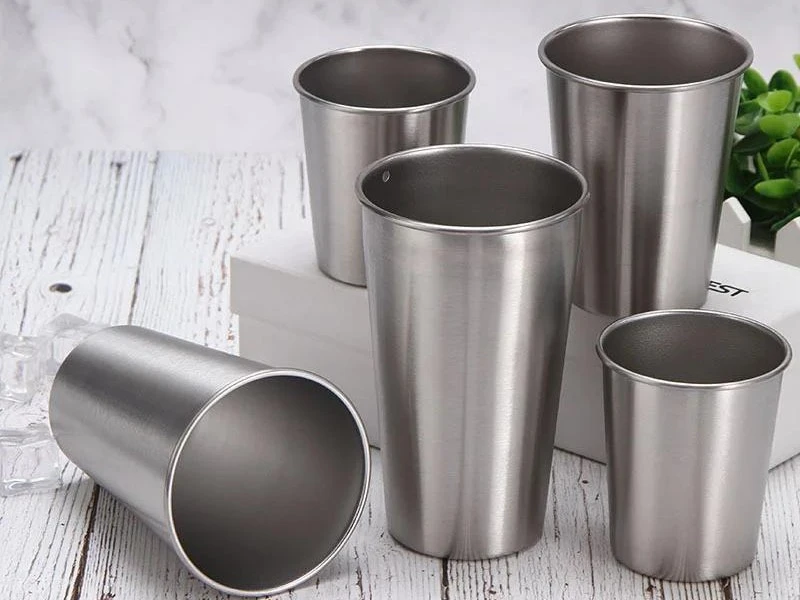
However, stainless steel cups tend to be heavier, more expensive, and harder to style in trendy designs. As a result, they’re less commonly used in single-use or high-volume scenarios and may not resonate with younger, style-conscious consumers. In the fast-moving consumer goods (FMCG) supply chain, their adoption remains relatively limited.
5. Paper Cups
Paper cups have quickly gained global popularity as an eco-friendly drinkware option. They come in a variety of structures, including single-wall, double-wall, ripple-wall (insulated), lidded designs, and PLA-coated biodegradable models. Their main advantages lie in being lightweight, cost-effective, easy to ship in bulk, and fully customizable through branded printing.
Paper cups are widely used in coffee chains, takeout services, offices, and event settings—any scenario where single-use and fast consumption are the norm. In many markets, they’ve also emerged as a key alternative to plastic cups.

As a leading supplier of disposable drinkware, GMZ offers a full range of paper cups in various sizes and formats, designed to comply with local regulations, meet sustainability standards, and match consumer preferences across different regions.
6. Silver Cups
Silver cups, made from precious metals, offer both functionality and aesthetic appeal. They are commonly found in luxury gift sets, religious ceremonies, and custom commemorative products. Cups made from pure silver or high-silver-content alloys feature strong antibacterial properties and excellent thermal conductivity, offering a unique tactile experience when drinking. In many cultures, silver cups also carry symbolic meaning, representing status, blessings, or tradition.
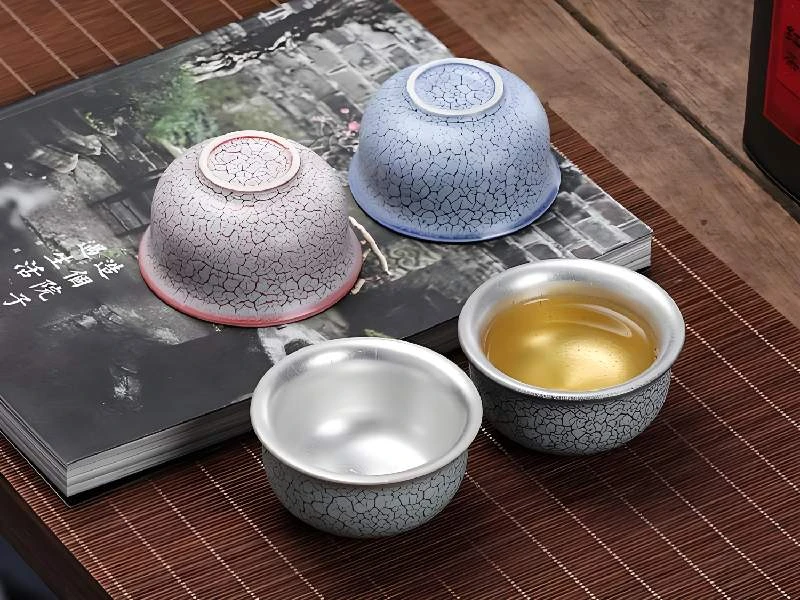
Compared to other metal materials, silver cups come at a much higher price point and require stricter manufacturing standards. They also demand extra care during shipping and storage to prevent oxidation. As a result, silver cups are mostly used in small-batch, high-value custom orders or collectible markets. While they are rarely used for standard beverage service or disposable applications, understanding this niche category can help you make more informed choices for specialty use cases.
Part 2: Cups Categorized by Usage: 6 Real-World Applications
Understanding cup materials is just the first step—buyers must also consider how the cup will be used. After all, whether it’s you or your customers using it, real-world practicality is key. So next, let’s look at how different cup types serve specific functions in real-world scenarios.
1. Coffee Cups
Coffee is one of the most common hot beverage scenarios, and it demands specific cup features—capacity, heat insulation, burn protection, and portability. Traditionally, cafés favor ceramic cups to create a refined, sit-down experience. But in fast-paced offices, chain stores, or takeaway setups, disposable paper and plastic cups have become the go-to choice, especially models with double walls, anti-scalding layers, or secure lids to balance speed and comfort.
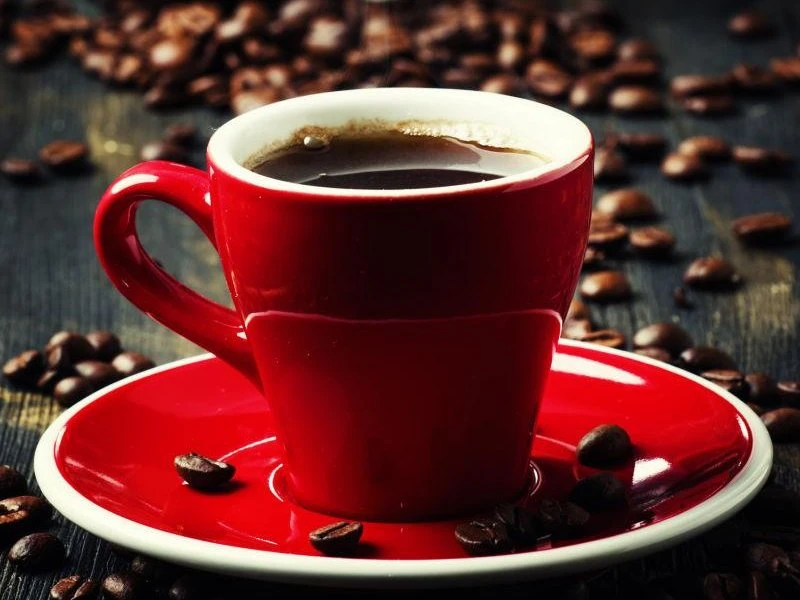
Cup size preferences also vary by region. In the U.S., 12 oz and 16 oz are standard, while Europe tends to favor smaller sizes like 8 oz and 10 oz. For bulk buyers, the ability to customize cup sizes and lid options often plays a key role in decision-making. To meet such diverse needs, suppliers are expected to offer flexible configurations that align with different channels and brand strategies.
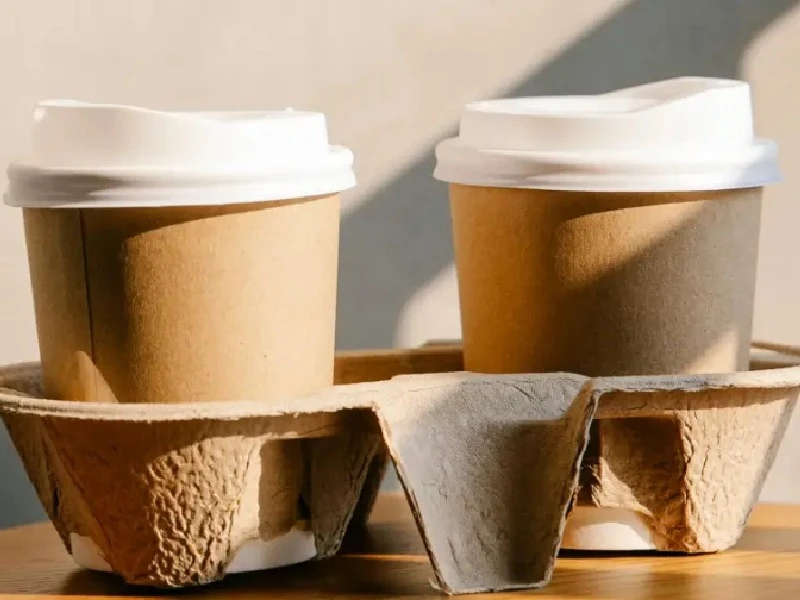
3. To-Go / Takeaway Cups
In takeaway scenarios, the key requirements for a cup are: portability, leak resistance, cost efficiency, and shipping safety. Paper cups and disposable plastic cups are the most widely used in this category, especially those with lids and straw slots, which make on-the-go drinking more convenient.
Many brands use these cup types as a canvas for custom printing to boost visibility and brand recognition. With tightening environmental regulations in recent years, many chains have started replacing traditional plastic cups with PLA or paper-based alternatives, further accelerating the rise of paper cups in the takeaway sector.
4. Cold Drink & Alcoholic Beverage Cups
Whether it’s juice, soda, smoothies, or cocktails, cold drinks are typically served in clear cups, making it easy to showcase the drink’s color and visually confirm the fill level. Glass cups are often used in restaurants and bars where ambiance and presentation matter. But for events, takeout, or parties, clear plastic cups are a more practical choice due to their lightweight, disposable nature. For buyers seeking both visual appeal and eco-friendliness, paper cups with waterproof coatings or PE/PLA film linings can serve as effective alternatives, especially in regions or brands aiming to reduce plastic usage.
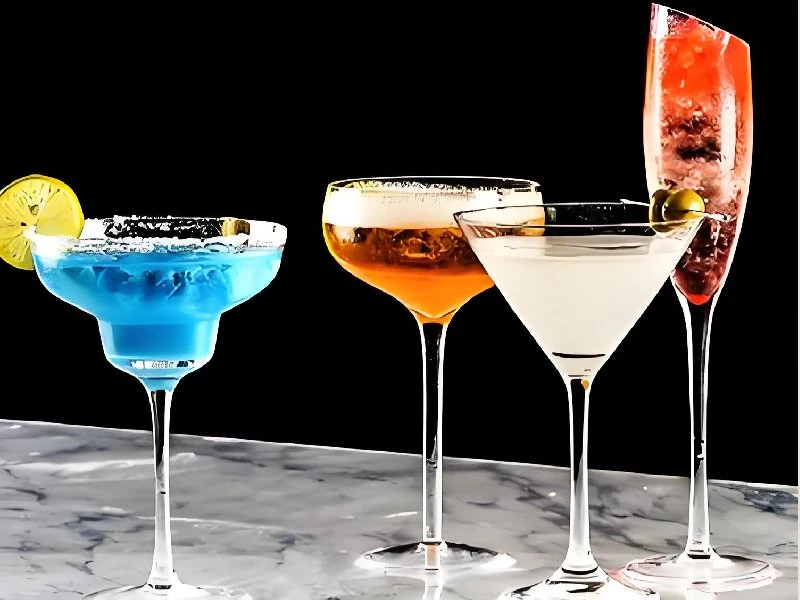
5. Insulated Cups
For situations where temperature needs to be maintained over time—such as in offices, outdoor activities, or business meetings—insulated cups are the go-to option. Metal and stainless steel vacuum cups offer excellent heat retention and are designed for repeated use.
At the same time, for short-term hot beverage needs like takeaway coffee, the market also offers double-wall paper cups and ripple-wall cups as lightweight alternatives. These disposable options provide decent insulation and burn protection while remaining cost-effective and convenient. However, their heat retention is far less effective than stainless steel vacuum-insulated models.
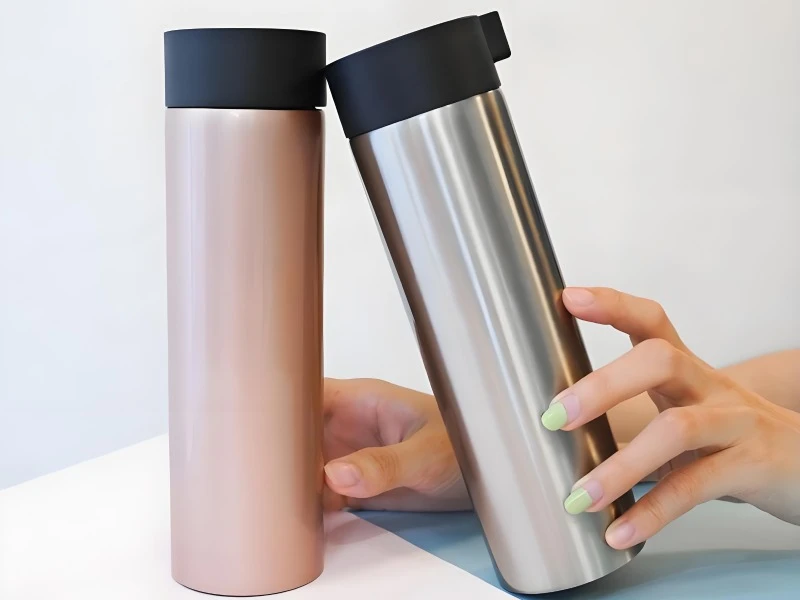
6. Measuring Cups
Measuring cups are used in kitchens, laboratories, and food production environments where precise liquid measurement is essential. They are typically made from glass or food-grade plastic and come with clear volume markings for easy use. Since these cups serve a functional purpose unrelated to beverage consumption, we include them here to help buyers distinguish between drinkware and specialty utility items.

7. Tea Cups
Tea service typically falls into two main categories: traditional and modern.
In traditional tea rooms or upscale tea sets, porcelain and glass cups are commonly used to highlight the color of the tea and create a sense of ceremony. These materials enhance the overall tea-drinking experience and are often associated with culture and refinement. In contrast, modern tea brands, bubble tea shops, and business meetings rely more on paper or plastic cups, especially for takeaway. Lidded hot paper cups or double-wall cups are often chosen to ensure drinking safety and convenience during transport.
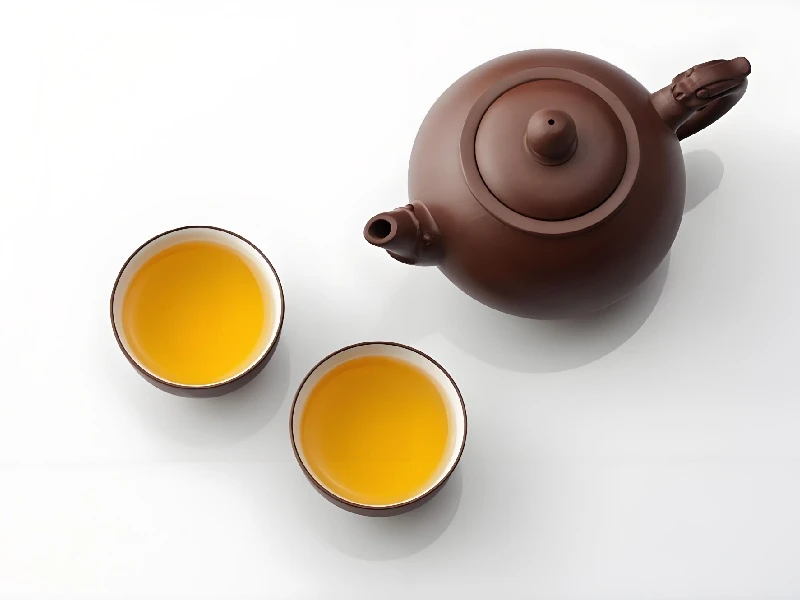
Quick Comparison Table: Choosing the Right Cup Material
Still wondering which type of cup to choose?
This quick table gives you a side-by-side comparison of popular materials—from classic ceramic to eco-friendly paper—so you can match each option to your specific use case and make smarter sourcing decisions.
| Cup Type | Best For | Pros | Cons |
| Ceramic Cup | Cafés, offices, branded gifts | Elegant, great heat retention, reusable | Heavy, fragile, not suitable for takeaway |
| Glass Cup | Restaurants, tea service, drink display | Transparent, odor-free, aesthetic | Breakable, costly to ship |
| Crystal Glass | Luxury dining, premium gifts | High-end feel, excellent clarity | Expensive, very fragile |
| Disposable Plastic Cup | Takeout drinks, fast food, events | Lightweight, low-cost, highly transparent | Single-use, not eco-friendly |
| Reusable Plastic Cup | Kids’ cups, offices, brand merchandise | Durable, BPA-free, shatter-resistant | Not heatproof, limited style options |
| Stainless Steel Cup | Outdoor use, travel, premium retail | Excellent insulation, long lifespan | Heavy, costly, harder to stylize |
| Paper Cup | Coffee chains, offices, eco alternatives | Custom printable, lightweight, low cost | Not reusable, basic insulation only |
| Silver Cup | Ceremonial gifts, collections, rituals | Antibacterial, symbolic, decorative | Expensive, tarnishes if not maintained |
Conclusion
By looking at cups through the dual lens of material and intended use, it becomes clear that each material affects product performance, cost, and environmental impact, while each use case demands specific features in terms of structure, capacity, and portability. Whether you’re a brand-side buyer, a distributor, or a retail business, understanding these differences can help you streamline product selection and reduce communication costs.
If you’re searching for the right packaging solution for beverages, especially for single-use, bulk supply, or products that align with global sustainability trends, we invite you to explore GMZ’s wide range of disposable cups. Feel free to contact us for more details or to request a tailored solution. Our team will help you find the most reliable, cost-effective cup products to match your market needs.


